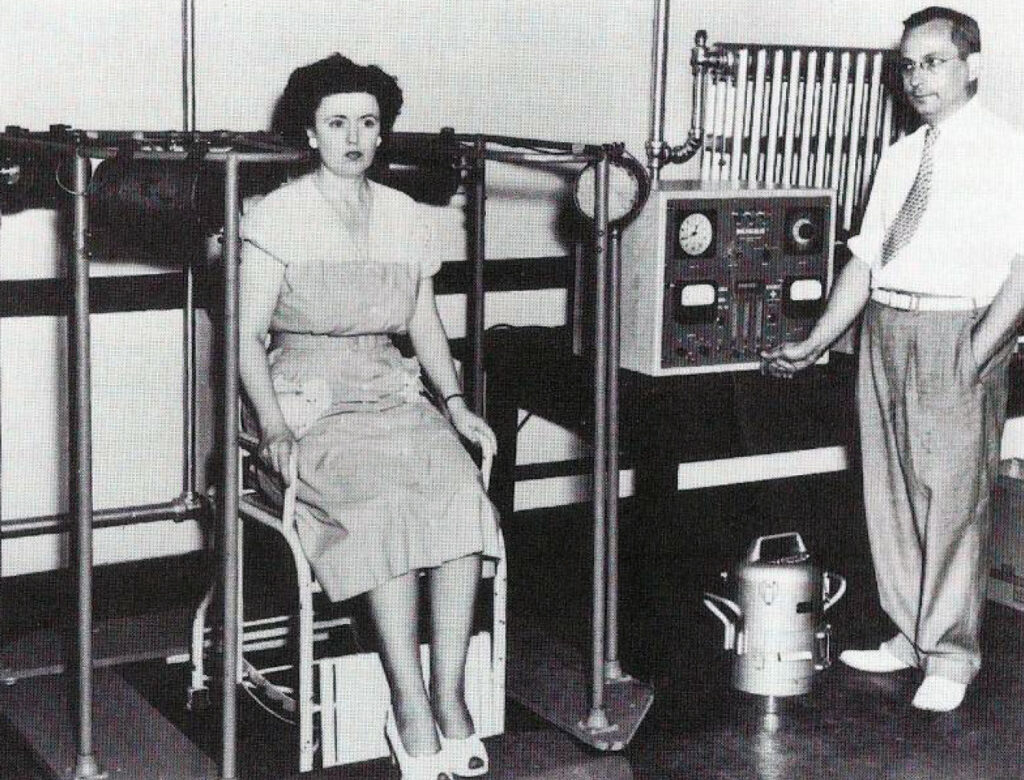In 1937, MGH Thyroid Clinic director Saul Hertz, MD, teamed up with Massachusetts Institute of Technology physicists to develop an early medical application of radiation. Hertz was testing his theory that iodine could deliver radiation to treat thyroid cancer, Graves’ disease and goiter. The thyroid, a small gland in the neck, uses the nutrient iodine in making hormones that contribute to organ function and metabolism. As Hertz predicted, when a patient drinks radioactive iodine it collects in the thyroid, destroying problem tissue without affecting neighboring organs. In this image from the 1940s, Hertz tests how much radiation his subject (colleague Doris Darby) absorbed when using radioiodine as a tracer.

